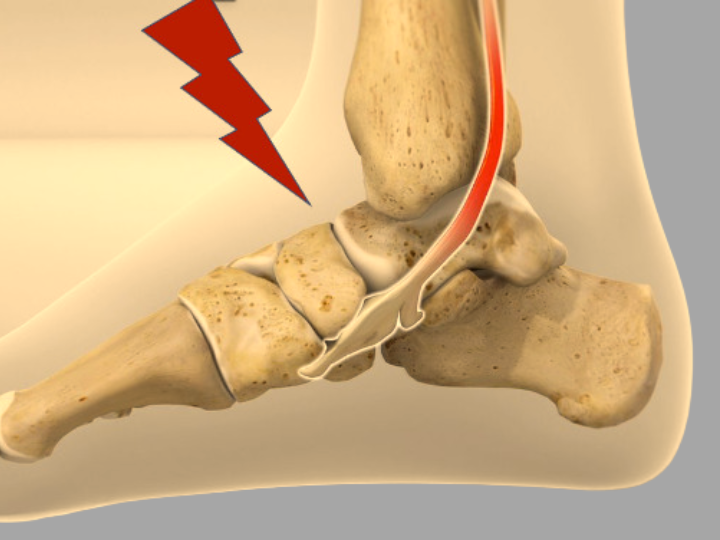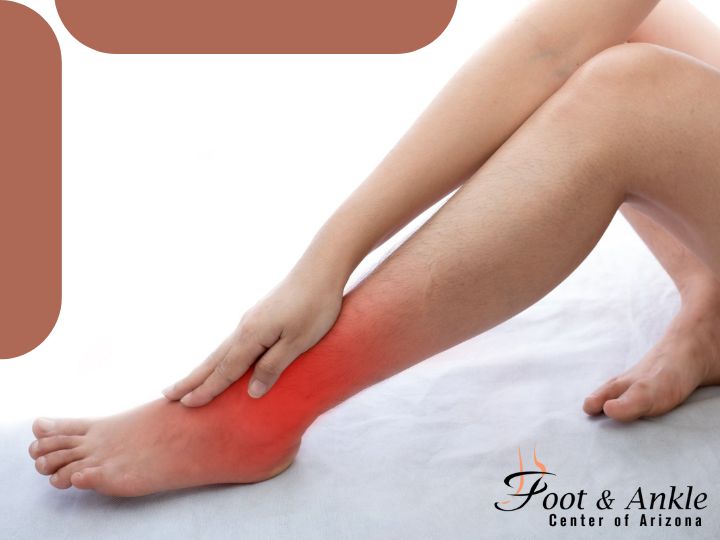If you’ve ever felt a sharp, stabbing pain in the bottom of your foot—especially with your first steps in the morning—you might be dealing with plantar fasciitis. This common foot condition affects millions of people, particularly runners, teachers, retail workers, and anyone who spends a lot of time on their feet. But what happens when the pain seems to return suddenly, even after some relief? In this post, we’ll explore what causes plantar fasciitis to flare up, how to recognize a flare-up, and what you can do to manage it effectively.
1. What Is Plantar Fasciitis?
Plantar fasciitis is the inflammation of the plantar fascia, the thick band of tissue that connects your heel to your toes. It supports the arch of your foot and absorbs shock when you walk. Overuse, stress, or improper footwear can strain this tissue and cause inflammation, leading to pain that can range from mild to severe.
2. Recognizing a Flare-Up: Signs and Symptoms
A flare-up of plantar fasciitis is when the pain returns or worsens after a period of improvement. Some common symptoms include:
- Sharp heel pain, especially in the morning or after sitting
- Increased pain after long periods of standing or walking
- Tenderness on the bottom of the foot
- Swelling near the heel
- Pain that gets worse with exercise but improves with rest
3. What Causes Plantar Fasciitis to Flare Up?
Plantar fasciitis flare-ups often have identifiable triggers. Here are the most common causes:
a) Overuse or Increased Activity
A sudden increase in physical activity—like walking long distances, starting a new workout, or standing for extended periods—can strain the plantar fascia and lead to inflammation.
b) Improper or Worn-Out Footwear
Wearing shoes without proper arch support, cushioning, or heel stability can lead to flare-ups. High heels, flip-flops, or unsupportive sneakers can all contribute to recurring pain.
c) Weight Gain or Obesity
Additional body weight places extra pressure on your feet, particularly the plantar fascia. Sudden weight gain—whether due to pregnancy or other reasons—can contribute to flare-ups.
d) Walking on Hard Surfaces
Standing or walking barefoot on hard surfaces like tile or concrete can irritate the plantar fascia, especially if you’re doing it for long periods without support.
e) Tight Muscles and Limited Flexibility
Tight calf muscles, Achilles tendons, or hamstrings can pull on the heel and strain the plantar fascia. Without proper stretching, this tightness can cause recurring pain.
f) Returning to Activity Too Soon
After initial recovery, returning to high-impact sports or intense workouts too quickly can trigger another flare-up. It’s important to reintroduce activity gradually.
g) Foot Structure and Gait Issues
Flat feet, high arches, or abnormal walking patterns can cause improper weight distribution, putting uneven stress on the plantar fascia.
4. Seasonal and Lifestyle Factors
Certain seasonal or lifestyle changes can unexpectedly trigger a flare-up. For example:
- Wearing sandals in summer with little support
- Holiday travel involving long walks in unfamiliar shoes
- Cold weather making muscles stiff and prone to injury
5. How to Prevent Flare-Ups
Preventing a plantar fasciitis flare-up involves a combination of self-care strategies and professional treatment. Here are some tips:
Wear Proper Footwear
Choose shoes with good arch support, cushioning, and a stable heel.
Stretch Regularly
Focus on stretching your calves, Achilles tendon, and plantar fascia daily.
Avoid High-Impact Activities
Choose low-impact exercises like swimming or cycling when you’re healing.
Use Orthotics
Custom foot orthotics, available at clinics like the Foot and Ankle Center of Arizona, can provide essential support and correct imbalances.
Rest and Ice
If you feel discomfort returning, take a break, elevate your feet, and use ice to reduce inflammation.
6. When to See a Specialist
If your plantar fasciitis symptoms last more than a few weeks or return frequently, it’s time to see a foot and ankle specialist. Ignoring chronic foot pain can lead to more severe problems like heel spurs, altered gait, or even knee and hip issues.
At the Foot and Ankle Center of Arizona, Dr. Kris A. DiNucci and his experienced team specialize in diagnosing and treating plantar fasciitis using personalized, evidence-based solutions. From conservative therapies to cutting-edge treatments like shockwave therapy or minimally invasive procedures, our goal is to relieve your pain and restore your mobility.
7. Available Treatments for Flare-Ups
Depending on the severity of your flare-up, treatments may include:
- Physical therapy
- Night splints
- Cortisone injections
- Custom orthotics
- Platelet-rich plasma (PRP) therapy
- Surgical options in chronic, unresponsive cases
8. Long-Term Management Tips
Once you recover, don’t stop your routine! Continue stretching, wearing supportive shoes, and avoiding overuse to keep plantar fasciitis at bay long-term.
Conclusion
A plantar fasciitis flare-up can be frustrating, especially when you’re trying to stay active. But by understanding what causes plantar fasciitis to flare up, you can take proactive steps to prevent it and protect your feet from recurring pain. Whether it’s footwear, activity level, or your foot’s biomechanics, managing the root cause is essential.
If you’re experiencing persistent heel pain, don’t wait—schedule an evaluation with Dr. Kris A. DiNucci, DPM, FACFAS at the Foot and Ankle Center of Arizona in Scottsdale. With over 25 years of experience and a compassionate, professional team, we’re here to help you get back on your feet—pain-free.
FAQs
Q: Can plantar fasciitis go away on its own?
A: In mild cases, it can improve with rest, proper footwear, and stretching. But persistent symptoms should be evaluated by a specialist.
Q: Is walking good for plantar fasciitis?
A: Light walking with supportive shoes is generally okay, but overdoing it or walking barefoot on hard surfaces can trigger flare-ups.
Q: How long do flare-ups last?
A: With proper treatment, a flare-up can last a few days to a few weeks. Ignoring symptoms can prolong recovery.
Q: What is the fastest way to heal a flare-up?
A: Rest, ice, stretching, and supportive footwear are key. In some cases, your doctor may recommend therapy or injections.
Summary
What Causes Plantar Fasciitis to Flare up? Flare-ups typically happen due to overuse, poor footwear, sudden weight gain, or tight muscles like the calves or Achilles tendon. Walking barefoot on hard surfaces, especially without proper arch support, can also trigger pain. Improper recovery after initial healing or resuming intense activities too soon may lead to recurring symptoms. Prevention includes daily stretching, supportive shoes, orthotics, and limiting high-impact movements. For chronic or severe cases, professional evaluation is essential. Dr. Kris A. DiNucci at the Foot and Ankle Center of Arizona offers expert diagnosis and personalized treatment plans to help patients find long-term relief.
![[2025] What Causes Plantar Fasciitis to Flare up?](https://arizonafoot.com/wp-content/uploads/2025/04/2025-What-Causes-Plantar-Fasciitis-to-Flare-up.png)



